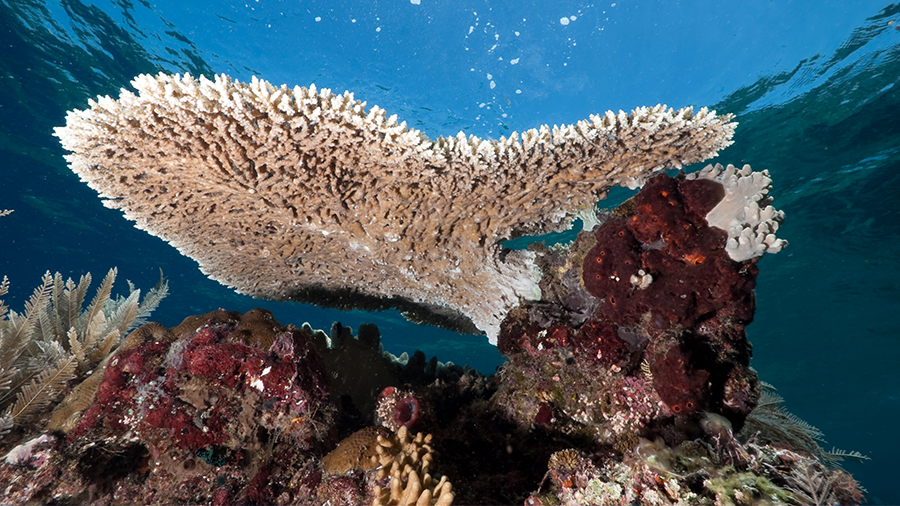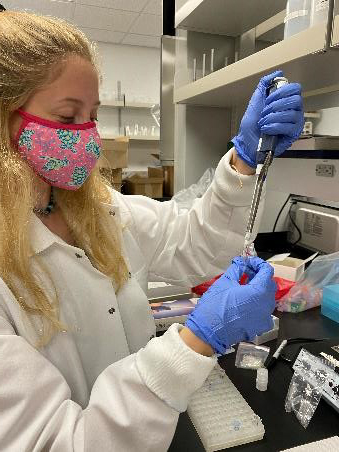Could corals use sound to communicate?
Corals are part of a highly complex ecosystem, but it remains a mystery if and how they might communicate within their biological community. In a new study, researchers found evidence of sound-related genes in corals, suggesting that the marine invertebrates could use sound to interact with their surroundings.
Coral reefs make up less than 1% of the ocean floor yet support more than 25% of all marine life. Around the world, coral reefs are being threatened by climate change, ocean acidification, diseases, overfishing and pollution. A better understanding of coral communication could help inform policies that aim to protect this critical ecosystem.

“A growing number of studies have shown that trees can communicate, and that this communication is important for ecosystems such as rain forests,” said Camila Rimoldi Ibanez, a high school student in the dual enrollment program at South Florida State College. “Coral reefs are often referred to as the rainforests of the sea because of the habitat they provide for a wide variety of plants and animals. Thus, we wanted to find out how coral communicates.”

Ibanez will present the new findings at the American Society for Biochemistry and Molecular Biology annual meeting during the virtual Experimental Biology 2021 meeting, to be held April 27–30. Her mentor is James Hawker, dean of arts and sciences at South Florida State College.
Many organisms that live in coral reefs perceive sound and use it to find their way to the reefs. Based on this information, the researchers decided to look for the presence of genes related to the reception and/or emission of sound in the coral Cyphastrea. Using PCR amplification, the researchers found probable evidence that two of the four genes they examined may be present in coral DNA. The genes they found — TRPV and FOLH-1 — are used for sound emission or reception in sea anemones and freshwater polyps, respectively.
In addition to performing more testing, the researchers want to sequence the TRPV and FOLH-1 genes they found to add additional evidence that these genes, or genes related to them, are present in coral.
“As we learn more about the negative impacts of sound in different kinds of ecosystems, it is vital that we set policies to protect and manage human noises in natural environments,” said Ibanez. “The more we know about how corals communicate, the better we can develop restoration and conservation projects to help corals as they face bleaching epidemics and other threats.”
Ibanez will present the findings in poster R4543.
Enjoy reading ASBMB Today?
Become a member to receive the print edition monthly and the digital edition weekly.
Learn moreGet the latest from ASBMB Today
Enter your email address, and we’ll send you a weekly email with recent articles, interviews and more.
Latest in Science
Science highlights or most popular articles

Decoding microglial language
Emory University scientists characterize extracellular vesicles that facilitate intercellular communication.

What is metabolism?
A biochemist explains how different people convert energy differently – and why that matters for your health.

What’s next in the Ozempic era?
Diabetes, weight loss and now heart health: A new family of drugs is changing the way scientists are thinking about obesity — and more uses are on the horizon.

How a gene spurs tooth development
University of Iowa researchers find a clue in a rare genetic disorder’s missing chromosome.

New class of antimicrobials discovered in soil bacteria
Scientists have mined Streptomyces for antibiotics for nearly a century, but the newly identified umbrella toxin escaped notice.

New study finds potential targets at chromosome ends for degenerative disease prevention
UC Santa Cruz inventors of nanopore sequencing hail innovative use of their revolutionary genetic-reading technique.

